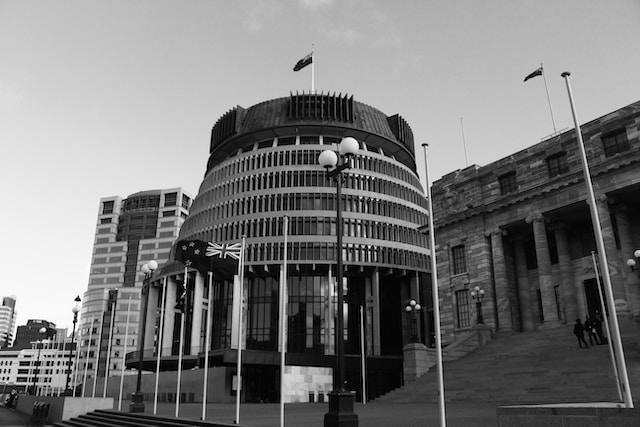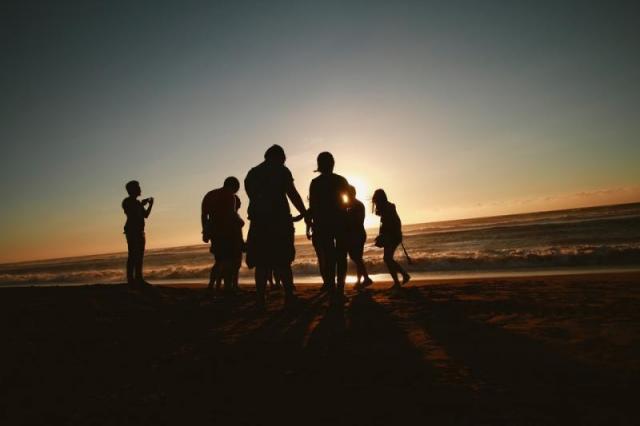Child care and protection in Aotearoa: history of institutional racism and calls for transformation
Tue 28 May 2024
This story looks at the reports Pūao-te-ata-tū and He Whaipaanga Hou, that highlighted institutional racism and the impacts for tangata whenua, particularly tamariki and rangatahi Māori. It also provides an overview of legislative reform of the care and protection system and ongoing calls for change.

This is part 3 of a 3-part series that provides an overview and background related to section 7AA, and the care and protection system in Aotearoa. Part 1 looks at the proposed repeal of Oranga Tamariki Act section 7AA including the new legislation, call for submissions and Waitangi Tribunal report. Part 2 looks at Oranga Tamariki Act section 7AA and Iwi partnerships.
Child care and protection in Aotearoa: institutional racism and calls for transformation
Pūao-te-ata-tū and He Whaipaanga Hou
Pūao-te-ata-tū (1988) and He Whaipaanga Hou (1987) are two defining reports in Aotearoa due to the way in which they highlighted the ongoing impacts of colonisation through institutional racism in government structures and policies and the significant negative impacts on the hauora of tangata whenua. Both reports were requested by government departments. For both reports, the authors set out with a new approach to examine the issue from the perspective of Māori.
In 1985, amid growing awareness of institutional racism and the impacts for tangata whenua, particularly tamariki and rangatahi Māori, the Minister of Social Welfare established a ministerial committee to advise on a Māori perspective for what was then Department of Social Welfare. The Committee considered both the Department, the Children and Young Persons Act (the legislation at the time), social work practice and the wider areas of courts and police.
The resulting report, Pūao-te-ata-tū, found that institutional racism was at the root of Māori social welfare problems, and predicted that the Crown would continue to fail Māori unless institutional racism was addressed. The report identified that mainstream government institutions were mono-cultural, with national structures rooted in the values, systems and viewpoints of Pākehā culture only. These systems failed to understand or acknowledge Māori cultural values and practices.
In the preface to the report, the authors wrote:
“At the heart of the issue is a profound misunderstanding or ignorance of the place of the child in Māori society and its relationship with whanau, hapu, iwi structures.”
The report recommended significant changes to the policies and practices of government agencies, with particular emphasis in giving Māori communities responsibility for the allocation and monitoring of resources. The report found that Māori succeed when rangatiratanga is recognised and supported, and recommended that Māori should be resourced to solve the problems Māori are facing.
He Whaipaanga Hou – A New Perspective, looked at the criminal justice system’s bias against Māori taking into account the wider social issues. The research was prompted by the disproportionately high number of young Māori men in courts and in prison. The report identified how institutional racism and discrimination lead to Māori being brought into the criminal justice system disproportionately and unfairly. It also highlighted how the current criminal justice approaches had failed to understand or consider this and prevented Māori from equitable access to justice. The report shared the perspectives of people with lived experience of injustice and outlined the need for Māori-led solutions.
Legislative change and ongoing calls to respond to Pūao-te-ata-tū
These reports influenced the Children, Young Persons and Their Families Act that was passed in 1989. The legislation included principles that prioritised 1) considering how decisions affecting a child or young person would affect the stability of their family, whānau, hapu, iwi, and family group (section 5) and 2) placing a child or young person within their whānau, hapu or iwi (section 13). See the Children, Young Persons, and Their Families Act 1989 as it was enacted and the current legislation — the Children, Young Persons, and Their Families Act 1989, also known as the Oranga Tamariki Act 1989.
The Children, Young Persons and Their Families Act and the Public Finance Act were both passed into law in 1989. The Mason Report (1992) commented on the impact of government fiscal policies on the Children, Young Persons and Their Families Act, and warned against a system that attempted to quantify social response in financial terms. A subsequent report by Judge Brown (2020) also reinforced these concerns and highlighted the importance of adequate funding from government.
However, the legislation did not fully realise or implement the recommendations of the reports and in the decades that have followed, tangata whenua have continued to call for change.
Over the last decade, there have been a number of inquiries, reports and hui calling for transformational change of the care and protection system, including the work of the Abuse in Care Inquiry. This work has continued to document the history and ongoing institutional racism and abuse in New Zealand's care and protection system, and the persistent harms for tamariki, rangatahi and whānau Māori.
In 2017, the addition of Section 7AA of the Oranga Tamariki Act 1989 recognised the Crown's responsibility for upholding the principles of Te Tiriti in the care and protection system. Section 7AA came info force in 2019. While section 7AA does not implement the full recommendations of Pūao-te-ata-tū nor meet the full obligations of Te Tiriti, it is the first time in Aotearoa's history that our care and protection legislation has referenced Te Tiriti. The implementation of section 7aa has led to a number of strategic partnerships between Oranga Tamariki and Māori, and ultimately to more tamariki and rangatahi Māori remaining in the care of their whakapapa and out of the state care system.
Below is a timeline of recent legislative changes and responses:
- 2015 – Social Development Minister Anne Tolley established the Modernising Child Youth and Family Expert Panel to lead a "complete overhaul" of Child, Youth and Family. At the time advocates raised concerns about the lack of child protection experts, lack of people with lived experience and lack of tangata whenua in the panel.
- 2016 – Based on the final report from the expert panel, the government published initial plans for "major state care reforms and a complete overhaul of Child, Youth and Family." These plans proposed to remove or alter 2 principles in the Children, Young Persons and Their Families Act that prioritised placing Māori children in care with whānau, hapū and iwi (see above). Tangata whenua and tauiwi advocates criticised these proposed reforms and the Māori Women's Welfare League filed a claim in the Waitangi Tribunal challenging the proposed changes.
- 2017 – The Children, Young Persons, and Their Families (Oranga Tamariki) Legislation Act 2017 received Royal Assent and was renamed the Oranga Tamariki Act 1989. This legislation introduced a new section (7AA) to the Oranga Tamariki Act 1989 outlining how Oranga Tamariki should give effect to the principles of Te Tiriti.
- June - November 2019 – Following media coverage of Oranga Tamariki's practices involving the uplift of pēpi Māori, Māori led calls for change including an open letter and petition written by Hands Off Our Tamariki and signed by 16,000 people. The Government also announced 3 separate reviews, to be conducted by Oranga Tamariki, the Children's Commissioner and the Chief Ombudsman. North Island Whānau Ora Commissioning Agency launched a Māori-led inquiry into Oranga Tamariki. The Waitangi Tribunal also conducted an urgent inquiry into the policies and practices of Oranga Tamariki.
- July 2019 – Section 7AA came into force in July 2019
- February - August 2020 – Reports were published from the Māori led inquiry and the Children's Commissioner. Further reports and government responses were also published including Oranga Tamariki's first report on their performance related to 7AA and the Independent Monitor's first report.
- December 2020 – The Children's Commissioner Andrew Becroft released a 2nd report from his inquiry calling for 'total transformation' of care and protection system. In giving evidence to the Waitangi Tribunal inquiry, Oranga Tamariki CEO Grainne Moss acknowledged structural racism in the care and protection system and the failure of the Crown to implement recommendations of Pūao-te-ata-tū.
- May 2021 – The Waitangi Tribunal released the final report from the urgent inquiry into Oranga Tamariki. The report, He Pāharakeke, He Rito Whakakīkinga Whāruarua found the 2017 legislatives changes, including 7AA are not enough to realise the recommendations of Pūao-te-ata-tū nor meet obligations under Te Tiriti. The Tribunal recommended a ‘Māori Transition Authority.’
- September 2021 – The Oranga Tamariki Ministerial Advisory Board, established in 2021, published their report Hipokingia ki te Kahu Aroha Hipokingia ki te Katoa. The government accepted all 25 recommendations in the report.
During this time, Oranga Tamariki began implementing Section 7AA. This included developing strategic partnerships with Iwi and other Māori organisations. The formalisation of these partnerships helped shift power and resources to tangata whenua, and in many cases, built on existing partnerships and Iwi work.
Also during this time, the Abuse in Care Royal Commission of Inquiry was launched. The inquiry has documented the lived experiences of survivors of the care and protection system and young people currently experiencing the care and protection system. Reports from the inquiry have documented that institutional racism has continued to persist, enabling great harm. The final report from the Inquiry is due to Government in June 2024.
Current legislative reform: proposed repeal of Section 7AA
Minister for Children, Karen Chhour, introduced the legislation, Oranga Tamariki (Repeal of Section 7AA) Amendment Bill on 12 May 2024. Submissions are open on the legislation. They are due by 3 July 2024.
Just before the legislation was introduced, the Waitangi Tribunal published their final report on the urgent inquiry into the proposed repeal of 7AA, finding that the proposal breaches the Treaty.
Related media
‘Not one more child’, E-Tangata, 26.05.2024
The fear of failing mokopuna Māori - Debbie Ngarewa-Packer, NZ Herald, 22.05.2024
Pāora Crawford Moyle | Social Work Practitioner of 30 years, Waatea News, 08.05.2024
Child protection decimation a ‘callous razor gang response’, Newsroom, 24.04.2024
Image: Pexels on Pixabay







